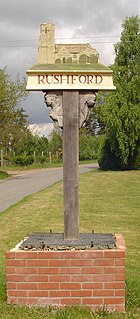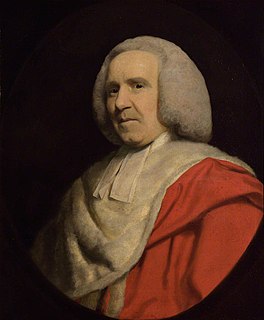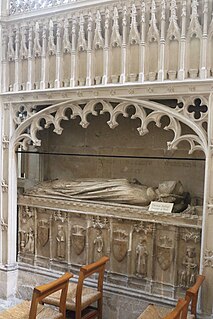Related Research Articles

John Caius, also known as Johannes Caius and Ioannes Caius, was an English physician, and second founder of the present Gonville and Caius College, Cambridge.
Pattesley is a village in the English county of Norfolk, about one mile (1.6 km) south of the village of Oxwick. It consists of a few scattered houses. The population is included in the civil parish of Colkirk.
Edmund Gonville founded Gonville Hall in 1348, which later was re-founded by John Caius to become Gonville and Caius College. Gonville Hall was his third foundation. Before this he had founded two religious houses, a College at Rushford, Norfolk, 1342 and the Hospital of St John at Lynn, Norfolk. The origin of his wealth is obscure.

Rushford is a small village in the English county of Norfolk. It is situated on the north bank of the River Little Ouse, 3+1⁄2 miles (5.6 km) east of the town of Thetford and south of the main A1066 road. The river forms the boundary between Norfolk and Suffolk and, until 1894, Rushford was in both counties. Rushford Hall is south of the river and thus in Suffolk.

Gonville and Caius College, often referred to simply as Caius, is a constituent college of the University of Cambridge in Cambridge, England. Founded in 1348, it is the fourth-oldest of the University of Cambridge's 31 colleges and one of the wealthiest. The college has been attended by many students who have gone on to significant accomplishment, including fifteen Nobel Prize winners, the second-highest of any Oxbridge college after Trinity College, Cambridge.

John SmithD.D. was a British academic and astronomer.
George Leonard Jenyns was an English priest, a landowner involved both in the Bedford Level Corporation and in the Board of Agriculture.
William Rougham was the second master of Gonville Hall, Cambridge from c. 1360. He had been a fellow of the college since the 1350s and was Bachelor of Medicine by 1366. He was also a priest with livings in the Diocese of Norwich and was personal physician to Henry le Despenser, Bishop of Norwich.
Thomas Bacon was the fifteenth master of Gonville Hall, Cambridge from 1552.
Physwick or FishwickHostel is a former constituent of the University of Cambridge located on the south side of the present Trinity Great Court, between the Queen’s Gate and Trinity Street. It was founded in 1393 when William Fiswick, the first esquire or armiger bedel of the university, bequeathed his Trinity Lane hall to Gonville Hall.

Thomas Boleyn, LL.B, , was the Master of Gonville Hall, Cambridge from 1454 to 1472, the seventh to hold that position. During the later 1440s, through three separate acts of foundation, he was one of the small group appointed to formulate the statutes of what became Queens' College in Cambridge. His brother Sir Geoffrey Boleyn, Lord Mayor of London 1457-58, was the great-grandfather of Anne Boleyn, Queen consort of England.

Sir John Ellys or Ellis (1634?–1716) was an English academic, Master of Gonville and Caius College, Cambridge from 1703.
Rev. Hamnet Holditch, also spelled Hamnett Holditch, was an English mathematician who was President of Gonville and Caius College, Cambridge. In 1858, he introduced the result in geometry now known as Holditch's theorem.

James Halman was an academic of the University of Cambridge. He held the office of Registrary of the university from 1683 to 1701 and was also the twenty-third Master of Gonville and Caius College.

Richard Fisher BelwardD.D. FRS was an academic in England in the second half of the 18th century and the early years of the 19th. He was born Richard Fisher, adopting the name Belward in 1791.
Thomas Attwood was a 15th-century priest and academic.
Henry Costessey, B.D. was a priest and academic in the 15th century.

Henry Crowe was an English parish priest and early animal rights writer.
Thomas Muriell was an English Anglican priest in the 17th century.